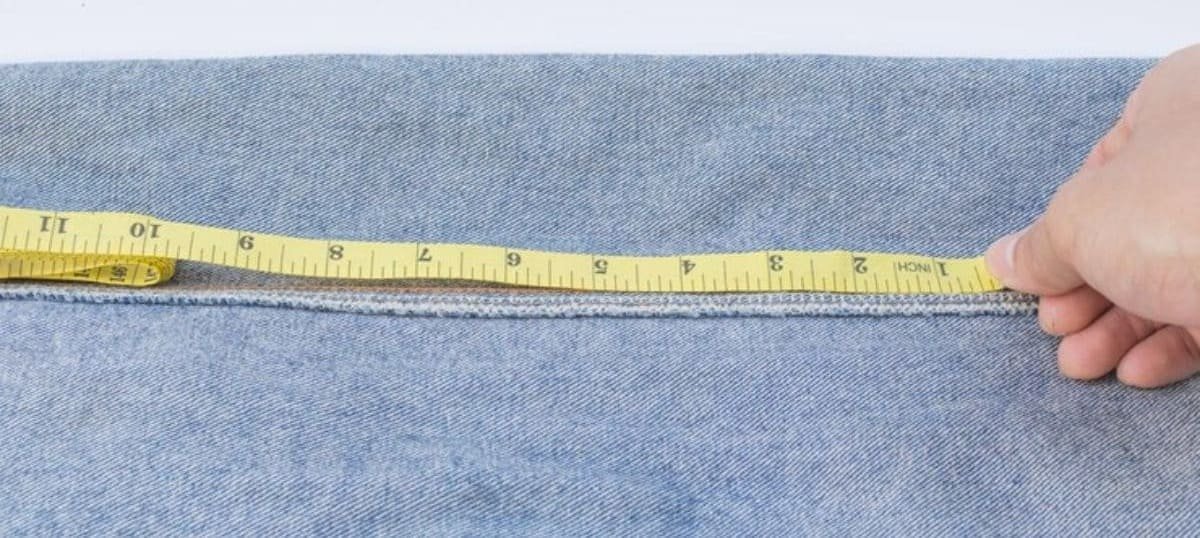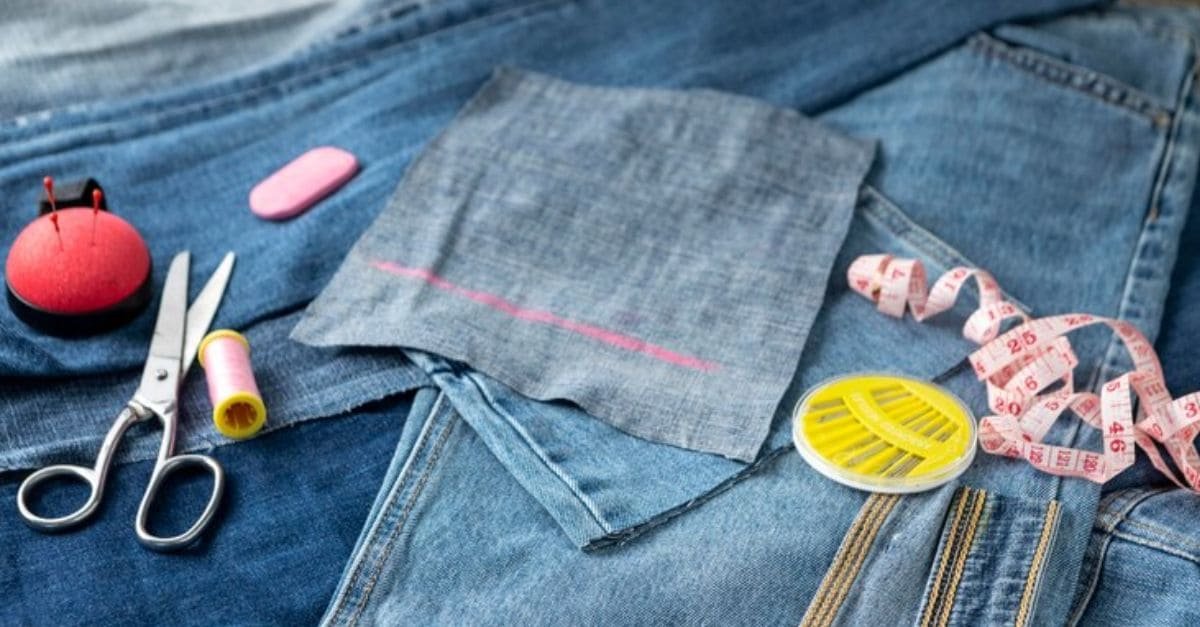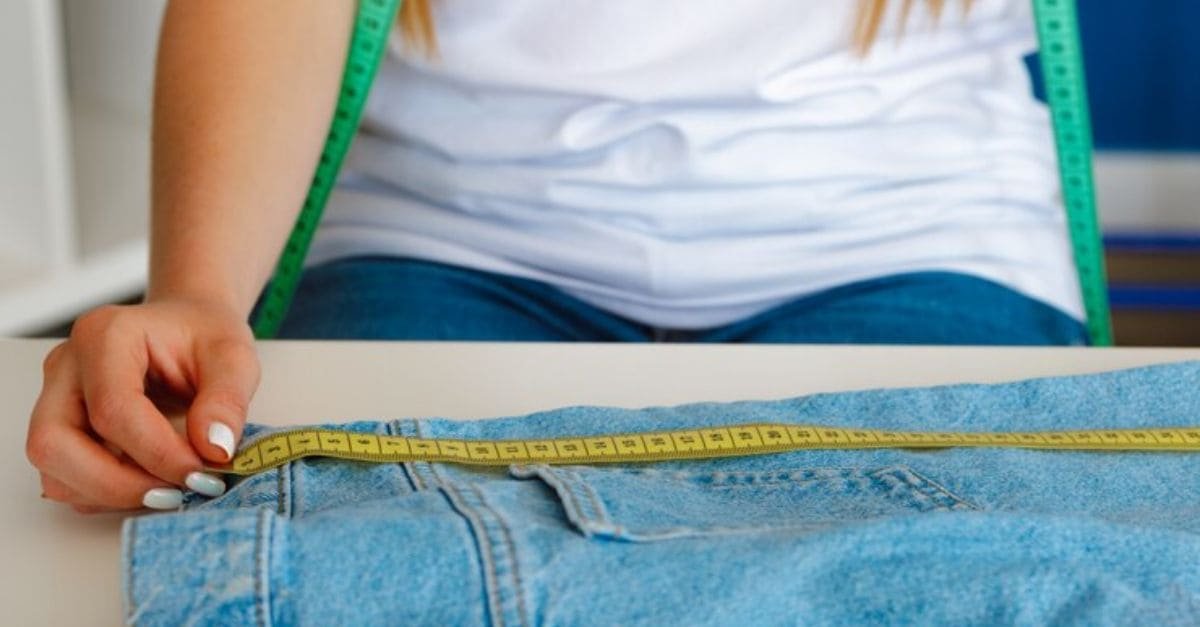Why is the yoke important in denim jeans?
The yoke on jeans is crucial because it helps provide a better fit around the back, defining the shape and ensuring that the jeans fit comfortably at the waist and hips. Its design can also contribute to how the jeans flatter your body, adding a subtle curve that creates a more balanced look.
The yoke design can dramatically influence the look and fit of jeans, which is why understanding the length and shape of the yoke can help you choose jeans that suit your body type and style preferences.
What’s the yoke length of a pair of jeans?
The yoke length is the measurement from the waistband down to the lowest point of the yoke at the back of the flare jeans. This length can vary depending on the design and fit of the jeans. Some jeans might have a short yoke length, which can make the jeans sit higher on the back, while others may have a longer yoke length, which influences the overall fit and appearance.
The length of the jacket impacts not only the shape of the straight-leg jeans but also how they fit around the waist, hips, and thighs. Yoke length is often considered when creating custom-fitted jeans, ensuring a perfect fit for individual body types. An adequately measured yoke can enhance comfort, as it allows the jeans to stay in place without causing discomfort or bulging around the waist.
The term “yoke” might sound foreign to those unfamiliar with garment construction, but it is an integral part of many denim jeans. So, what’s the yoke length of a pair of jeans, and where exactly is it found?
The yoke is a section of fabric located at the back of a pair of jeans, typically just below the waistband. It is an essential design feature that provides structure and enhances the garment’s appearance. The yoke itself does not serve a functional purpose in terms of comfort or durability; instead, it serves an aesthetic role, influencing how the jeans fit and shaping the wearer’s silhouette.
How to Measure the Yoke Length of a Pair of Jeans

Measuring the yoke length on black jeans is not as complicated as it may sound. Here’s a simple guide on how to measure it accurately:
- Lay the jeans flat on a smooth surface with the back facing up.
- Locate the waistband and measure straight down from the waistband to the lowest point of the yoke.
- Take the measurement using a soft measuring tape, ensuring the tape is straight and follows the natural line of the yoke.
- Record the measurement in inches or centimeters, depending on your preference.
It’s essential to note that the yoke length is often just one factor in determining how jeans fit. While some jeans may feature longer or shorter yokes, the overall fit and cut of the pants also influence how the yokes will sit on your body.
Types of Yokes and Their Impact on Fit
The jacket is not a one-size-fits-all design. Several different types of yokes can be found in jeans, and each type offers a distinct aesthetic appeal. Understanding the types of bikes can help you determine which one is most flattering for your body shape.
V-Shaped Yoke
The most common type is the V-shaped yoke. It features a pattern that dips down at the center, resembling the letter “V.” This design is widely regarded as flattering because it visually elongates the back and creates a slimming effect. The V-shape also helps create a more defined waistline.
Inverted V-Shaped Yoke
The inverted V-shaped yoke is the opposite of the V-shape, with the fabric pattern angling upward at the center. This style can offer a more structured look, creating the illusion of a broader hip area. It’s commonly seen in jeans designed for a looser fit or more relaxed cuts.
Wide Yoke
A wide yoke is essentially a deeper version of the V-shaped, where the sides dip even lower, creating a broader and more dramatic effect. This type of jacket is often used in high-waisted jeans and can accentuate the waistline while balancing out proportions.
Horizontal Yoke
The horizontal yoke is a straight line of fabric that runs just below the waistband. This design can sometimes make the waist appear more expansive, and thus, it may not be the most flattering for individuals with broader hips. It’s better suited for those with a narrower body type.
Sweetheart Yoke
The sweetheart yoke length and features are a gentle curve that mimics the shape of a heart. This design is often used in feminine jeans cuts to create a softer, more romantic look. The sweetheart yoke is usually seen in vintage-inspired styles.
How to Choose the Right Yoke for Your Body Type

Choosing the correct yoke depends on your body type and the effect you’re aiming to achieve.
Here’s a brief guide:
- V-shaped yoke: This is a universally flattering choice for most body types. It creates a slimming effect, elongating the back and enhancing the waistline.
- Inverted V-shaped yoke: Ideal for those seeking a more defined hip area, this yoke works well with relaxed or looser jeans.
- Wide yoke: Best for high-waisted jeans, this design can help balance out proportions and define the waist.
- Horizontal yoke: While it can make the waist appear wider, this yoke is ideal for those with smaller waists and narrower hips.
Tips for Buying Jeans Based on Yoke Length
When purchasing jeans, understanding how the yoke—the V-shaped section at the back just below the waistband—affects the overall fit and appearance is crucial. The yoke determines how well the jeans contour to your body, influencing comfort and style. Here’s a detailed breakdown of the key factors to consider:
Pay Attention to the Fabric
The type of fabric used in jeans plays a significant role in how the yoke fits and affects the overall look.
- Stretch Denim: Jeans made with stretch denim (which contains elastane or spandex) offer more flexibility and adapt to body movements. This stretch can slightly alter how the yoke fits by making it mold better to your lower back. However, stretch denim may also lose shape over time, so choosing the right balance of stretch and structure is essential.
- Non-Stretch Denim: Rigid denim, which lacks elasticity, provides a more structured and firm fit. Since it does not stretch to accommodate your body, the yoke must be correctly proportioned to your body shape from the start. The lack of stretch means a precise fit is crucial for comfort.
Understanding the fabric composition will help you choose a pair of jeans that not only looks good but also fits comfortably over time.
Check the Yoke Shape
The shape of the jacket significantly influences the way the jeans fit around your waist, hips, and backside. Different yoke shapes create various visual effects on your body’s proportions:
- V-Shaped Yoke: This is the most common yoke style, with a downward-sloping V shape. It helps create a lifted and curved effect on the backside, making it ideal for enhancing the appearance of curves. A deeper V shape will create a more pronounced lifting effect.
- Inverted V-Shaped Yoke: This rare yoke style angles slightly upward instead of down. It can create a flattening effect on the backside, making it suitable for those who prefer a more relaxed or straight fit.
- Straight Yoke: Found primarily on relaxed and loose-fitting jeans, a straight yoke gives a more boxy and less contoured look. It is ideal for people who prefer a relaxed or androgynous silhouette.
By understanding how different yoke shapes influence the jeans’ fit, you can choose a pair that enhances your natural shape and aligns with your style preference.
Go for a Custom Fit
If you struggle to find jeans with the perfect yoke length or fit, custom-fitted jeans are an excellent solution.
- Personalized Measurements: When you get jeans tailored or custom-made, you can provide your exact body measurements. This ensures the yoke length is proportioned correctly to complement your shape, preventing issues like gaping at the waist or excessive tightness.
- Better Comfort and Fit: Custom jeans are designed to match your unique body proportions, ensuring the best comfort and aesthetic appeal. This is especially beneficial for individuals with distinctive body types who often struggle with standard sizing.
How does the yoke affect the fit of jeans?
The yoke plays a key role in providing a better fit around the back, shaping the waist and hips. Its design can influence how the jeans flatter your body and contribute to a more balanced silhouette.
What are the different types of yokes in jeans?
There are several types of yokes, including:
- V-shaped yoke: Flattering for most body types, creates a slimming effect.
- Inverted V-shaped yoke: Adds structure and is ideal for looser fits.
- Wide yoke: Used in high-waisted jeans, enhances the waistline.
- Horizontal yoke: Creates a wider waist appearance, suited for narrower body types.
- Sweetheart yoke: Has a gentle curve, often used in feminine or vintage styles
How do I choose the right yoke for my body type?
- V-shaped yoke: Works for most body types, elongates the back.
- Inverted V-shaped yoke: Best for those with a broader hip area.
- Wide yoke: Great for high-waisted jeans, balances proportions.
- Horizontal yoke: Ideal for those with smaller waists and narrower hips.

